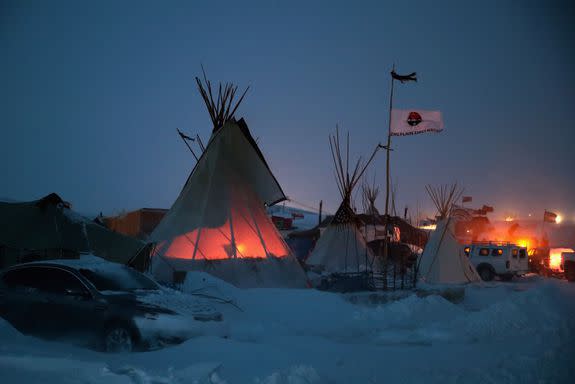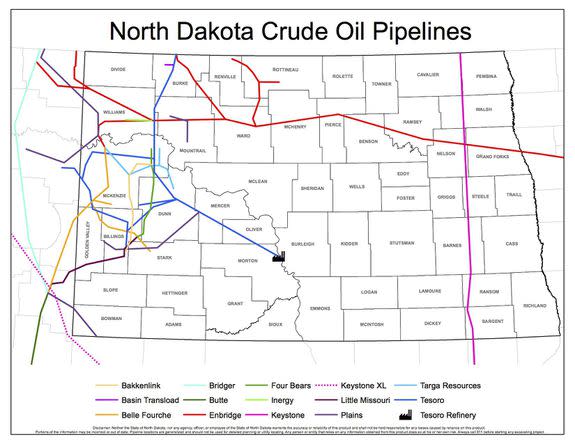Dakota Access protesters say major oil spill validates their concerns

Opponents of the Dakota Access Pipeline say a major oil spill in North Dakota "validates" their months-long struggle to stop pipeline construction near an important waterway.
The oil spill occurred just 150 miles outside the Dakota Access protest camps near Lake Oahe on the Standing Rock Sioux reservation.
SEE ALSO: How young Native Americans built and sustained the #NoDAPL movement
State officials estimate that the Belle Fourche Pipeline in western North Dakota spewed more than 176,000 gallons of crude oil into a creek after electronic monitoring equipment failed to detect the leak.
Dakota Access protesters — who call themselves water protectors — have argued for months that plans to run the new pipeline beneath Lake Oahe, a large Missouri River reservoir, would jeopardize the region's water supplies and threaten sacred sites.
The Belle Fourche spill "is proof that we're right," Allison Renville, an activist and member of the Sisseton Wahpeton Oyate Sioux tribe, told NBC News this week.
"It validates our struggle," she said.

Image: Scott olson/Getty Images
Tara Houska, a Native American environmental activist who has stayed at the protest camps since August, said the recent oil spill "gives further credence to our position that pipelines are not safe," NBC News reported.
Dakota Access opponents scored a major victory on Dec. 4 after the U.S. Army Corps of Engineers denied a crucial permit to allow the $3.8 billion pipeline to cross the lake.
The pipeline's builder, Energy Transfer Partners, has insisted the Dakota Access would include safeguards such as leak detection equipment and remote monitoring operations.
But pipeline safety equipment isn't foolproof. True Companies, the Wyoming company that operates Belle Fourche, said it's not yet clear why the older pipeline's monitoring equipment didn't detect the leak.
The 6-inch steel Belle Fourche pipeline was built in the 1980s and is used to gather oil from nearby wells and bring it to a collection point.

Image: North Dakota pipeline authority
A landowner discovered the oil spill on Dec. 5, although the precise date of the rupture isn't yet known, according to North Dakota officials.
Bill Seuss, an environmental scientist with the state's health department, said the spill migrated nearly 6 miles from the spill site along Ash Coulee Creek and polluted an unknown stretch of private and U.S. Forest Service land near the waterway.
The creek feeds into the Little Missouri River, but Seuss said it so far appears that no oil leaked into the river or has threatened drinking water supplies.
Only about 37,000 gallons, or 21 percent of the spilled oil, had been recovered as of Monday.
Associated Press contributed reporting to this story.
